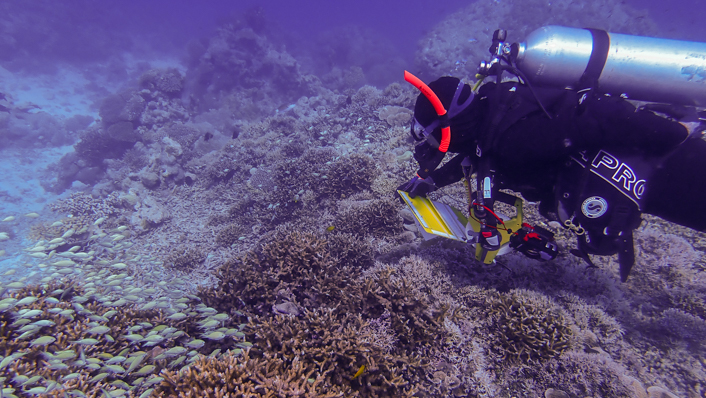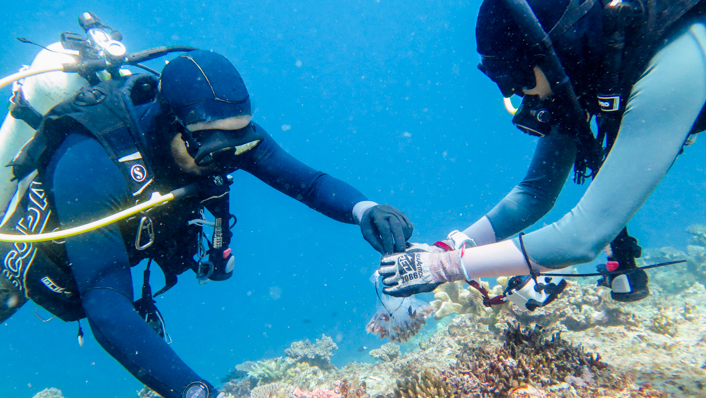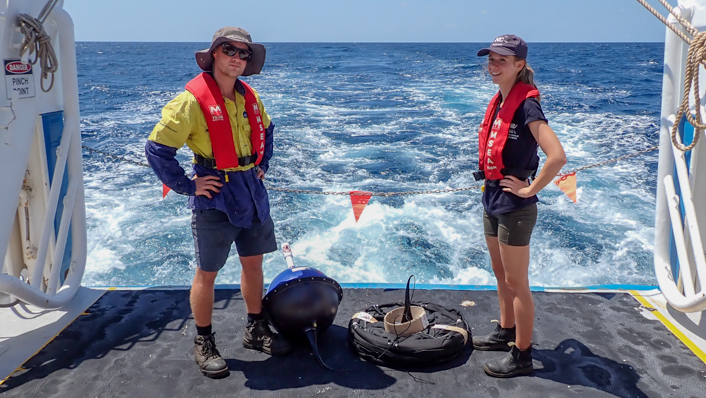Little or no coral bleaching has been observed by Australian Institute of Marine Science (AIMS) researchers at remote coral reefs off the north-west coast of Australia.
The team of scientists from AIMS and The University of Western Australia have just returned from a field trip to the Scott, Ashmore and Mermaid Reefs located hundreds of kilometres off the Kimberley coast to survey the potential impacts of elevated sea temperatures.

There had been concerns that the isolated Ashmore and Scott Reefs would be affected by bleaching after satellite monitoring indicated that heat stress had been building to levels associated with mass bleaching and mortality early in the summer.
But a series of cyclones and storms in the region between February and April likely cooled waters sufficiently to ensure a mass bleaching event was avoided, the scientists said.
AIMS coral reef ecologist Dr James Gilmour, who led the field work, said it was rare positive news to be able to share in the midst of the global bleaching event and the fifth mass bleaching event on the Great Barrier Reef since 2016.
"It was a relief to observe that the WA oceanic reefs had not been impacted in a similar way to the Great Barrier Reef, especially considering the significant heat stress that satellite monitoring indicated had built up over the Scott and particularly Ashmore Reefs in December and January," he said.
"Satellite data predicted the heat stress had peaked at almost 14 degree heating weeks (DHW - a measure of heat over time) in some areas around Ashmore, which for temperature sensitive corals is the equivalent of spending around seven weeks at 2 degrees above average. Normally you see significant bleaching and mortality at 8 DHWs.
"We did see some minor bleaching and evidence of recent mortality, at a few sites at Ashmore and the Scott Reefs, but not nearly as much as expected. We will now pull data from the temperature loggers we had deployed at the reefs, to determine whether temperatures in-water were as high as indicated by the Sea-Surface Temperatures derived from satellites.

"We also observed some damage from the recent storms and cyclones and some evidence of disease, but we'll need to analyse our monitoring data to determine the condition of the reefs compared to previous years.
"Our observations at Mermaid Reef in the Rowley Shoals, which is further south and previously has been less likely to bleach, indicates these reefs were less affected by the elevated sea temperatures and remain in good condition."
AIMS has been monitoring the Scott Reefs - a remote and diverse group of oceanic atolls - for almost 30 years. This collection of three separate reefs had been hit by severe bleaching events in 1998 and 2016, and additional heat stress in 2017, 2019 and 2020, driven by climate change.
Dr Gilmour said that although the reefs had largely avoided bleaching this time around, thanks to several storms and cyclones, the consequences of previous heat stress events could still be seen.
"Climate change is driving more regular disturbance events on these diverse and rich marine environments, so it is vital we continue to track their condition with our long-term monitoring so we can better understand their capacity to recover and adapt to higher temperatures," he added.
"Western Australia's reefs have had a reprieve this year but the long-term trajectories for coral reefs with increasing ocean temperatures are very concerning. We must consider ways that marine science can help to best manage and conserve many of the vital goods and services that coral reefs provide to humanity.
"It is also critical that carbon emissions are reduced to bring temperatures under control and other human activities that are harmful to coral reefs are addressed."

At Ashmore Reef, the team also installed oceanographic instruments and collected genetic samples to help build knowledge of the current resilience and function of the reef.
The data collected will contribute to the Building Resilience in Australia's Iconic Offshore Reefs project, currently underway with managing entity Parks Australia, and supporting the Ocean Discovery and Restoration program.
The project with AIMS focuses on Ashmore and Mermaid Reefs. The data collected there will contribute to the development of a framework for oceanic reefs that will guide management decisions across Australia's marine park network.
AIMS scientists will return to both Ashmore and Mermaid later this year and into 2025 to collect more data for this project.
Feature image: Mermaid Reef






